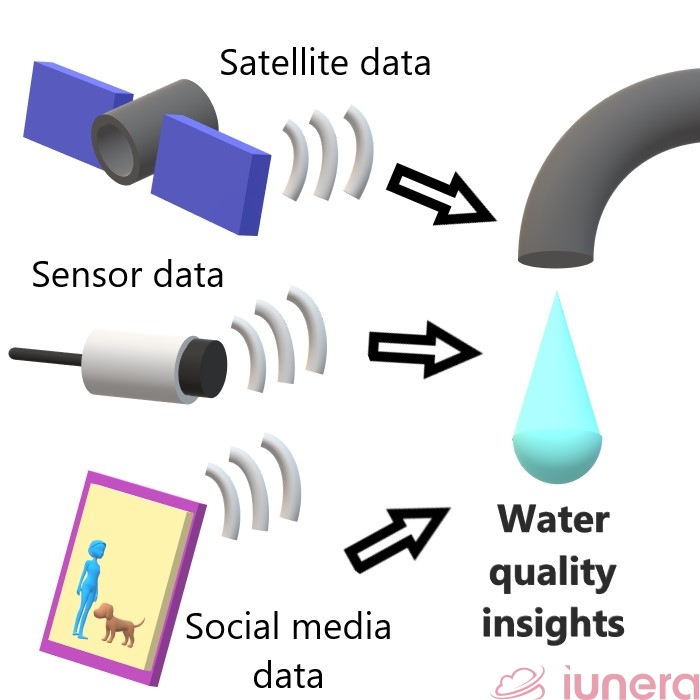Besides climate action, the implementation of Big Data technology applies well in water management in a world that can’t live without water. So what are the first-, second- and third-party data for water management? In this article, we take a look at water management as a use case for first-, second- and third-party data.
Big Data used for water management
In Part 1 of our Big Data-driven sustainable development article series, ensuring clean water and sanitation is Sustainable Development Goal number 6 (SDG 6).
With the large amounts of data being collected by water treatment plants and manufacturers, Big Data can be used to identify water supply issues, find out the level of water use, minimise water wastage and forecast future water quality, to list a few Big Data-driven water management decisions.
First-party data for water management
As explained in our previous article about data source origins, first-party data is your own data, which you have direct access to. In e-commerce, your company collects the data directly from your audience.
In the case of a water treatment facility, the most obvious example of first-party data is the multi-sensor data collected from the Internet of Things (IoT) systems including the Wireless Sensor Network (WSN), Supervisory Control And Data Acquisition (SCADA) and Automated Meter Reading (AMR) installed by the facility itself.
To recap, the following IoT systems have their respective data functions for each facility:
- WSN to monitor water quality in real-time in terms of pH, electrical conductivity, oxidation reduction potential and turbidity.
- SCADA to monitor the conditions of a water treatment facility, factory, agricultural farm, or energy plant in real-time.
- AMR to accurately measure water levels and detect potential water leaks.
Second-party data for water management
Second-party data is the first-party data of the company you’re partnering with, if there is a need for a partnership.
If you’re a city council, you can work with water treatment facilities to use their IoT sensor data as insights for improving water services in your city, for instance.
Third-party data for water management
Third-party data is data collected by a company that has no direct connection to your company, usually an aggregator, from various sources and sold as a package.
Similar third-party data sets used in climate action, namely environmental data repositories and geospatial datasets, can be used for water management.
Other third-party data useful for this purpose are crowdsourced social media data for citizen sentiment analysis and weather forecasts for precision irrigation in agriculture.
An example of the three data sources in water treatment
In an attempt to make this article clearer than the crystal clear waters of the Maldives, here is an example for water treatment.
Let’s say that you’re leading a city council and your council works with a water treatment facility to supply good quality water throughout your city.
Your council is able to collect feedback about the city’s water supply from the city’s residents through online feedback forms, townhall meetings and enquiries via customer service calls, emails and chatbots.
The residents’ feedback about the city’s water supply are your council’s first-party data.
To understand what happens on the supply side of the water supply chain, the city council needs IoT sensor data from the water treatment facility to monitor water quality, levels, leaks and facility conditions.
The facility’s first-party data is your council’s second-party data.
Here’s where third-party data might come in handy for your water management project with the help of the data analysts you hire.
The analysts mine and analyse the crowdsourced social media data like rants on Facebook to understand what your residents go through with regards to water supply.
Your analysts also analyse and run algorithms on the weather forecasts for your city to predict whether there will be rain or sunshine to determine how much water the facility will catch.
Additionally, they will also refer to data repositories and satellite data for anything that could add value to the water insights like risks of pollution.
How the data sources fit into Big Data-driven water management

Since water management is about ensuring that the supply meets demand and that supply is safe for consumption, the data used should come from both sides of the water supply chain.
We can’t stress enough that which data are considered as first-, second- and third-party data depends on who collects and owns the data directly and who uses the data.
Similar to e-commerce, the data sources in the case of a city council fill each other’s gaps like a jigsaw puzzle, whereby the combined benefits of using all three data sources can be reaped.
The city council relies on its council to collect first-party data, the water treatment facility to give second-party data and external parties like social media, weather forecasters, data repositories and satellite data providers for third-party data.
As for the treatment facility, their number one data gem is the data collected from their IoT sensor systems while other data sources like the city council’s feedback data and external data can be taken into consideration.
However, first- and second-party data are more likely to be relied on by the water supply decision-makers, whereas third-party data serves as an optional source of value, especially since the data analysis here drives decisions about the most essential and precious resource in the world.
